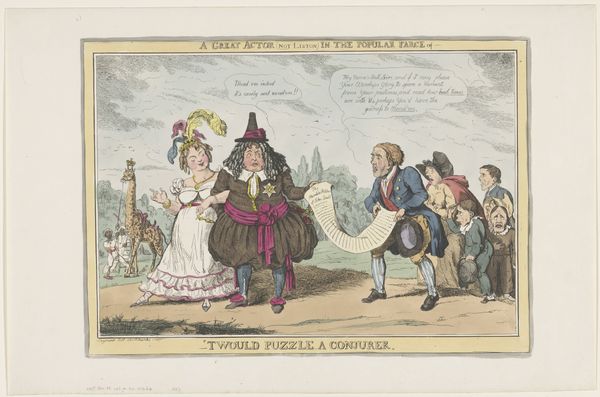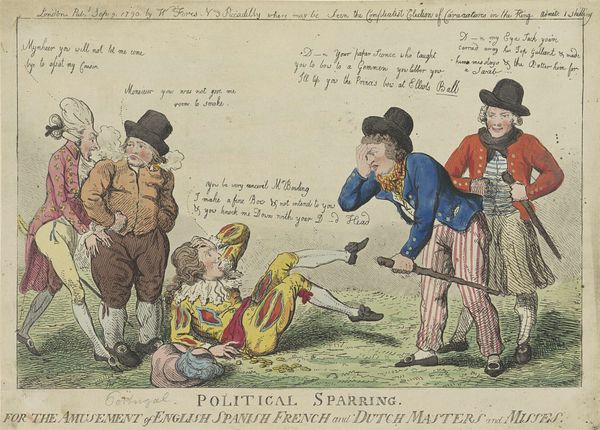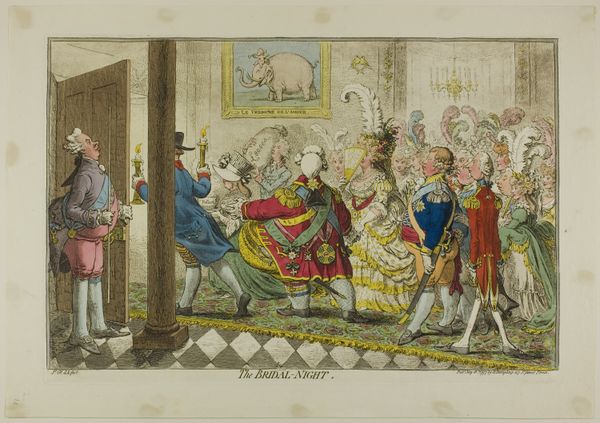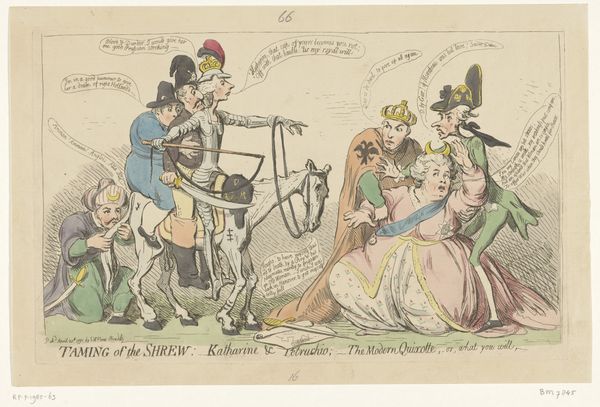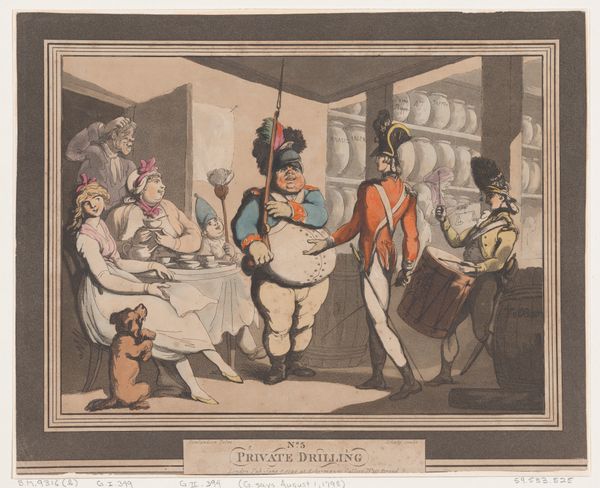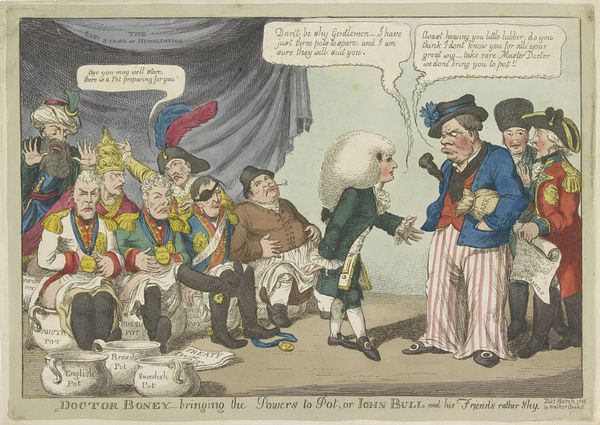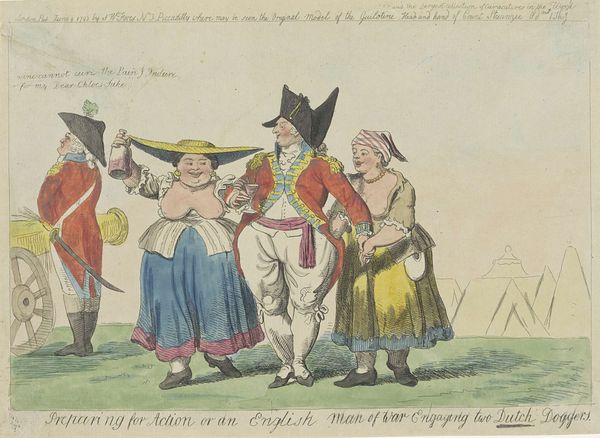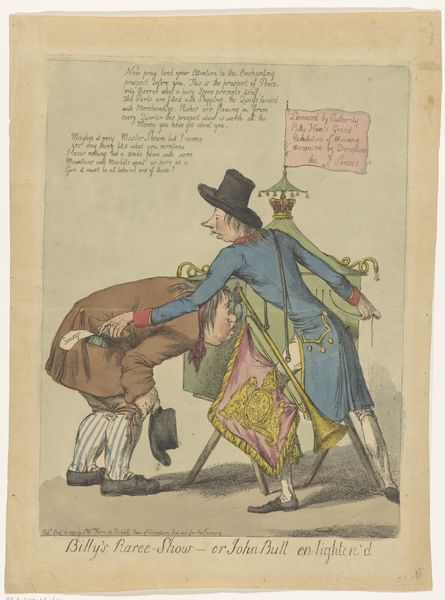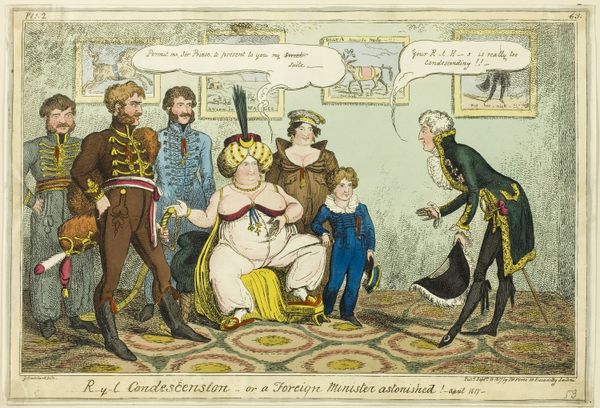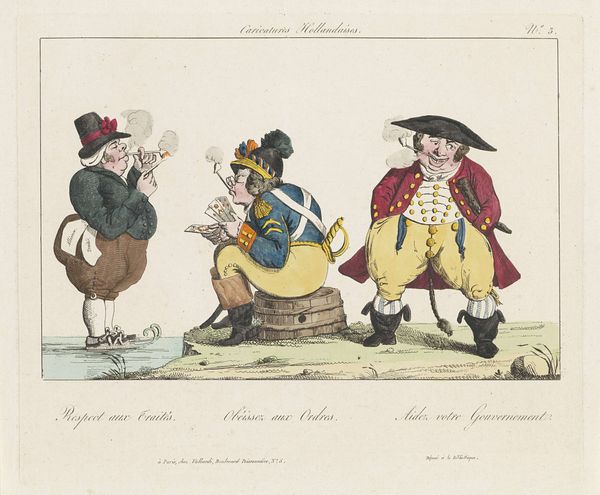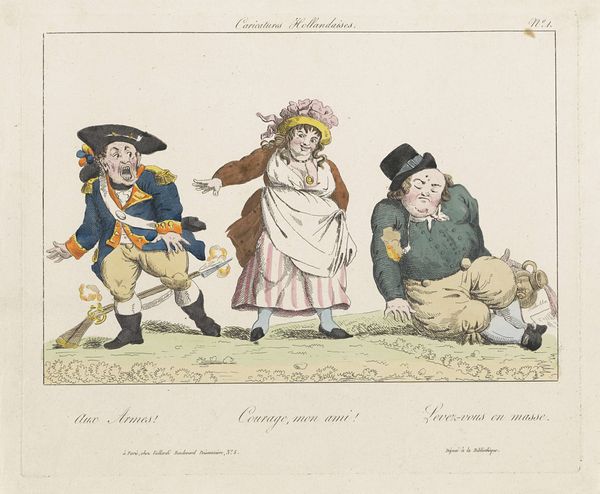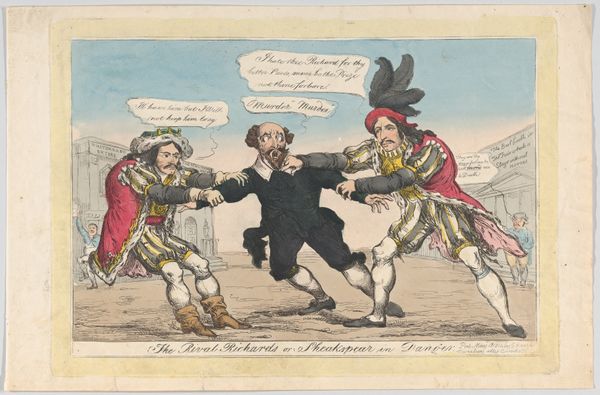
The Damnation of Obadiah (Tristram Shandy) 1800 - 1820
0:00
0:00
drawing, print
#
drawing
# print
#
caricature
#
dog
#
men
#
genre-painting
Dimensions: Sheet (trimmed): 9 3/16 × 13 1/4 in. (23.4 × 33.7 cm)
Copyright: Public Domain
Curator: Here we have “The Damnation of Obadiah” by Henry William Bunbury, an intriguing drawing and print dating from around 1800 to 1820, presently housed here at the Metropolitan Museum of Art. Editor: My first impression is that it's… chaotic. The composition is cluttered with figures, and the caricature style really amplifies a sense of absurdity. The lines seem almost frantic. Curator: The piece certainly offers insight into the satirical art flourishing at the turn of the 19th century. Bunbury often lampooned social mores, and this seems to be a humorous take on some sort of domestic or political drama, potentially related to the military, given the uniforms. Editor: Notice how the artist uses color to create focal points. The bold reds and blues of the costumes immediately draw the eye. But that heavy reliance on outline, doesn't it flatten the picture plane? The depth feels very limited. Curator: Indeed, but that flattening enhances the caricature effect, directing attention toward the social critique embedded within the work. The print refers to a specific novel written by Laurence Sterne; his writing influenced ideas about liberty, individualism, and skepticism towards authority, that was reflected on contemporary visual satire, especially around gender roles. Editor: I agree there's a political dimension here. And Sterne's book would give that extra bite of irony, I suppose. Curator: Exactly. Knowing its literary references, shifts the experience with the visual layout of this drawing/print, making it become something akin to political commentary in a time of huge social changes in post-revolutionary Western societies. Editor: So, seeing the exaggerated figures interacting within their almost stage-like setting gives the work much more layers in how we perceive reality itself. Well, Henry William Bunbury provides, more than entertainment. Curator: It encourages us to reflect on the dynamics of power and perception within British society at the time. It shows how politics and aesthetics are entwined and ever-shifting.
Comments
No comments
Be the first to comment and join the conversation on the ultimate creative platform.

